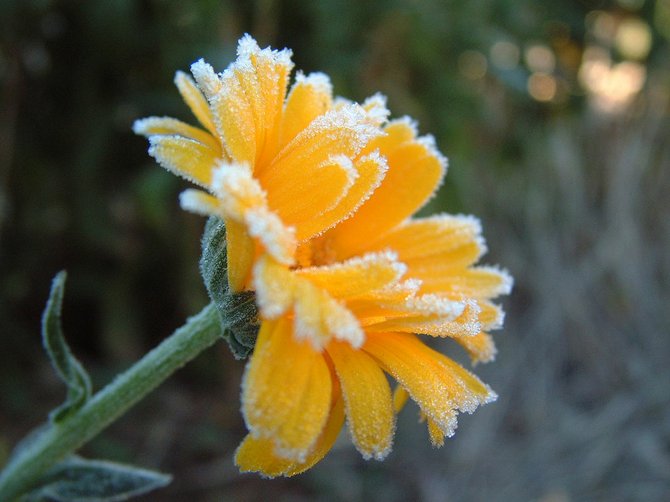The first frosts of the season can destroy plants if you aren’t prepared. Photo by Photo by Ganast, through Flickr
Some folks may remember that first frost came early for central Mississippi last year, at the end of October. While frost is a pleasant milestone of the seasons for most people, it can be tragedy for fall gardeners. At least, without precautions.
Commercial growers use a lightweight, white material called Agribon to protect their crops from frost. It comes in different thicknesses for ever greater frost protection, some as much as 8 degrees below freezing.
You can order it from any of a number of commercial suppliers online. A 50-foot by 83-inch roll costs about $20 at growerssupply.com.
Unfortunately, if all you are trying to protect is 4-foot by 8-foot Jim’s Plot, that’s something of a waste—unless you cut it up and give away what you don’t need to friends or neighbors. Get a smaller size (two 14x14-foot pieces) for $39.99 at Peaceful Valley: groworganic.com.)
Urban homesteaders are always looking for a cheaper way to use, reuse or repurpose what’s on hand, so they shouldn’t feel obligated to spend money to protect from frost when it can be done for free. Such a route is to use old bed sheets or a light blanket, just enough to keep the frost off tender shoots.
The main concern is that the covering must be light so that it doesn’t crush the plants. If the weather is really cold, rather than just throwing it on at night, it should be white or translucent to allow some sun to penetrate and hold heat if it’s left on during the day. (You don’t want to smother your plants.)
Some farmers use Agribon as a seasonal cover that performs multiple tasks: keeping plants protected from frost; acting like a mini-greenhouse, holding in solar heat for greater soil temperature; and protecting from insects. They usually use the lighter weights of Agribon, rather than the heavy, thick versions. It won’t protect much below 32 degrees, but it does offer protection from a dip in temperature and/or biting winds.
That should be enough for any cold snap we might get now. We normally don’t get a hard, killing frost until around the end of November to the first of December. As winter approaches, more intensive measures may be required.
For example, a simple way to keep winter greens from freezing is to simply take a few plastic soft drink bottles or milk jugs, fill them halfway with water, and put them between the rows of your plants. That passive solar heating will keep the plants from freezing below the level Agribon alone offers and especially if placed under Agribon with the plants.
Create ‘Climate Change’ in Your Back Yard
Create “climate change” in your own garden with low tunnels. See article by Eliot Coleman in Mother Earth News: jfp.ms/lowtunnels


